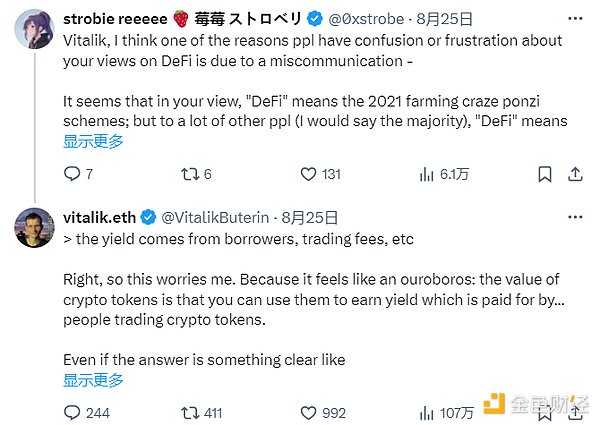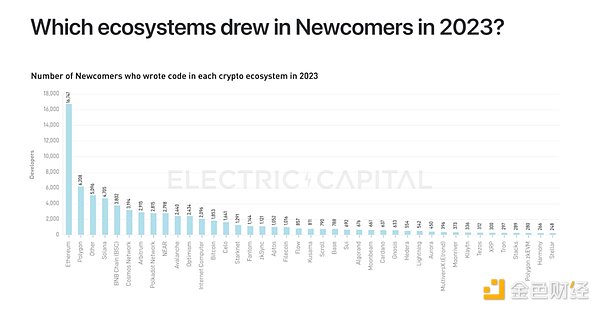Author: Climber, Golden Finance
Recently, there have been more and more topics and controversies surrounding Ethereum. Not only does Vitalik himself need to explain his views, but even the Ethereum Foundation has to issue an announcement to calm the community's doubts.
In this round of bull market cycle, Ethereum's performance can be described as mediocre. The approval of the Ethereum spot ETF in the United States did not make ETH's trend explode as investors expected, but on the contrary, the price of the currency went lower and lower. This inevitably made Ethereum, which has the reputation of "the king of ten thousand chains", gradually lose the respect of investors and the community, and then questioned all aspects of Ethereum.
Controversy continues, Ethereum urgently needs to reshape its authority
In recent times, community members have raised varying degrees of doubts about Vitalik's remarks, the Ethereum Foundation, and even the construction of the Ethereum ecosystem, and the latter has also responded and refuted them.
On August 25, KOL @0xstrobe questioned Vitalik and publicly accused him of poor communication on the topic of DeFi. The original text is: "Vitalik, I think one of the reasons people are confused or frustrated about your views on DeFi is miscommunication - in your view, "DeFi" seems to mean the 2021 mining craze Ponzi scheme. But for many others, "DeFi" means saving and borrowing money on Money Market such as Aave, CDP such as RAI (which you also mentioned!), Synthetics, etc. These are all healthy decentralized financial applications - income comes from borrowers, transaction fees, etc. Many of the "Ponzi economics" that are integrated into the DeFi ecosystem can only bring temporary improvements to certain indicators, but this is not all of DeFi."

The answer is clear, for example: the income of those who earn 8% annual interest in US dollars is paid by those who pay 8% annual interest to go long ETH with 2x leverage, but this means that the DeFi market exists downstream of the ETH market. So although DeFi may be great, it is fundamentally limited and cannot become an explosive innovation that pushes crypto technology to another 10-100 times adoption.
However, Vitalik's reply has attracted more doubts and rebuttals, such as Electric Capital partners saying that Vitalik's words apply to all finance. KOL @PaperImperium said that Vitalik's speech has a misunderstanding of human economic history. The CEO of Alphaverse Capital said that Vitalik's view is untenable.
Then, the Ethereum Foundation's transfer of 35,000 ETH aroused community doubts, mainly because the agency's annual expenditure report is not transparent.
ETHGlobal member Josh Stark said that the Ethereum Foundation is currently preparing an updated expenditure report, which will cover expenditures in 2022 and 2023 and will be released before the Devcon SEA conference (November). At the same time, he also revealed an overview of expenditure information in this report, including its internal and external expenditures, such as:
"L1 R&D" includes funding for external customer teams, as well as internal EF researchers. In these two years, internal expenditures accounted for about 38% and external expenditures accounted for about 62%.
Internal spending includes EF teams like:
- Geth;
- Privacy and Scaling Exploration (PSE);
- Solidity;
- Cryptography Research;
- Robust Incentives Group;
- Devcon, etc.;
All of these teams work publicly and share information about their activities on their websites, github, and social channels.
External spending means grants. We have been publishing regular reports on EF grant activity on blog.ethereum.org for the past 4 years, and in the chart I shared above, the largest new category is “New Institutions”. A key goal of EF is to help build new organizations that can strengthen and support the Ethereum ecosystem in the long term. This category includes grants to the following organizations: - Nomic Foundation; - Decentralized Research Center (@TheDRC_); - L2Beat (@l2beat); - 0xPARC Foundation (@0xPARC); - and other Ethereum-related and adjacent organizations. In addition to questioning Vitalik and the Ethereum Foundation, community members have raised questions about the construction of Ethereum. Ethena labs risk director @MacroMate8 said that since 2021, almost no new people have entered the ETH ecosystem. But on the other hand, SOL is full of young developers who are constantly developing.

In response, Josh Stark cited the data in the Electric Capital developer report to refute. And Vitalik also replied that he liked this chart to underestimate the success of Ethereum by listing L2 as a separate category, but even with this obstacle, Ethereum still looks great.
In addition, there are doubts such as Vitalik and most core developers do not regard ETH as a store of value or a meaningful programmable currency, and Vitalik also responded that if he did not believe that ETH is SOV, he would not hold about 90% of his net assets in it.
Can Ethereum still explode?
For the above-mentioned topic disputes and the official responses of Vitalik and Ethereum, many institutions and celebrities have also given their own insights and predictions on the prospects of Ethereum.
The founder of Cyber Capital said that Ethereum is declining and L2 is "dancing on its grave". He pointed out that since the implementation of EIP-4844 (Proto-Danksharding), Ethereum's fee income has dropped significantly and cannot keep up with the rate of inflation. At the same time, the usage and fee income of the L2 network hit new highs, and lobbied to keep Ethereum's capacity low. Bons believes this constitutes a "parasitic relationship."
In addition, the L2 network is actually stealing Ethereum's users and fees, attracting users by pretending to be "the same as Ethereum." Bons predicts that the L2 network will eventually migrate or become an independent L1 network, and Ethereum will gradually decline. He criticized the Ethereum leadership for "selling out" its own interests for the L2 network, believing that this exposed systemic problems in governance.
He warned that if Ethereum expands L1 in a breakthrough way in the future, it may cause the token and equity prices of all L2 networks to collapse, so the L2 network has an incentive to prevent the expansion of Ethereum.
JPMorgan Chase gave the reason for Ethereum's poor performance in its research report: Ethereum spot exchange-traded funds have generally experienced net outflows since their launch last month, while the spot Bitcoin ETF launched earlier this year has been more successful. Ethereum funds had net outflows of about $500 million, while Bitcoin ETFs had net inflows of more than $5 billion.
The bank also said that the weak data for Ethereum ETFs was somewhat expected, noting that Bitcoin's "first-mover advantage", lack of collateral and lower liquidity meant it was less attractive to institutional investors.
Zhu Su believes that the problem with the Ethereum Foundation is not the premature sale of valuable tokens, but the inability to provide a coherent roadmap and effective leadership.
However, there are still bullish views on Ethereum.
CF Benchmarks CEO believes that demand for Ethereum spot ETFs may continue to grow in the coming months, and more wealth management companies are expected to offer such products to clients.
He also said: "Once wealth managers and financial advisors have completed the education process about what Ethereum is, its utility, and why they should hold it with the Bitcoin ETF, the funds flowing into the Ethereum ETF will continue to climb. The education process will allow investors to understand the Ethereum economy and emphasize its main differences from Bitcoin, thereby fully demonstrating that the allocation drivers are different and both belong to a balanced portfolio."
Arkham listed past data in the case of the Ethereum Foundation's recent large-scale sale of ETH. That is, in 2020, the foundation sold 100,000 ETH, after which ETH rose 6 times. Arkham: The Ethereum Foundation sold 100,000 ETH in 2020, after which ETH rose 6 times
The founder of 1confirmation believes that the market value of Ethereum may exceed Bitcoin in the next five years. Currently, the market value of Bitcoin is 4 times that of Ethereum. Both will continue to grow, but Ethereum will eventually surpass Bitcoin.
He explained that Bitcoin has a clear narrative (digital gold), and institutions have now accepted that narrative. Ethereum has been the most influential blockchain in the crypto space for the past five years, but people (outside the circle) know little about Ethereum. Ethereum is scarce, generates income, and has real use cases. Since its market value is now significantly smaller than Bitcoin, Wall Street can have more. Wall Street is expected to continue to buy and vigorously promote Ethereum to the world in the coming years.
Mads Eberhardt, senior cryptocurrency analyst at Steno Research, gave advice on how to get out of trouble for Ethereum. He believes that interest rates are the most critical factor affecting the attractiveness of DeFi because it determines whether investors are more inclined to look for higher-risk opportunities in the decentralized financial market.
Conclusion
As a representative of blockchain technology, Ethereum is given unlimited expectations, and more and more L2 is generated around it. But in this round of crypto market cycle, Ethereum and its ecosystem seem to have stalled, with no bright spots at all, which is no wonder it has been continuously criticized by the community.
However, as far as Vitalik and Ethereum officials responded to the community's doubts, they were quite sincere and timely. Ethereum has also experienced a greater crisis of trust, so it is better to continue to be more patient with this king of chains.
 JinseFinance
JinseFinance
 JinseFinance
JinseFinance Xu Lin
Xu Lin JinseFinance
JinseFinance Bitcoinist
Bitcoinist dailyhodl
dailyhodl Others
Others Cointelegraph
Cointelegraph Cointelegraph
Cointelegraph Cointelegraph
Cointelegraph Cointelegraph
Cointelegraph